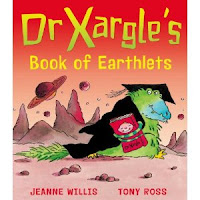Well, I was planning to post more this week, but I did manage to at least get two in. That's me looking on the bright side! Fair warning. I'll be leaving that side in a minute. . .
We had a workshop day on Thursday in the library of our school. I was very happy because these in-district workshop days are usually held at our central office meaning I don't normally ever see my substitute. Since I was in the building, I was able to meet with my sub in the morning and go over my plans with her. I was able to explain each lesson in great detail. WONDERFUL! Color me happy when she told me she was a teacher but left a few years ago when she had her son. A former teacher for my sub? DELIGHTFUL! Could this be any better?
SO PLEASE TELL ME HOW IT IS THAT ON FRIDAY I FIND OUT MY FRIENDS DID ALMOST NONE OF THE WORK I LEFT?!!!!!!!!!!!!!!!!!!
HOW IS IT THAT MY FRIENDS DID A MATH LESSON THAT IS TWO LESSONS AHEAD OF WHERE WE ARE?!!!!!!!!!!!!!!! Ummm, yeah, I did write down the page numbers I wanted them to do and actually reviewed that lesson in the teacher's guide with her.
HOW IS IT THAT IN A MERE 15 MINUTES MY FRIENDS READ EIGHT, YES EIGHT!, LONG PAGES OF SCIENCE TEXT REGARDING NEWTON'S LAWS OF MOTION?!! Well, I'm sure they had complete comprehension of that. NOT!
HOW IS IT THAT MY FRIENDS DID A READING LESSON THAT HAD ABSOLUTELY NO VALUE AND IS NOTHING AT ALL THAT I LEFT FOR HER TO DO?!!!!!!!!!!!!!!!!! Don't even know what to say about this.
HOW IS IT THAT THE PLANS I WROTE OUT AND EXPLAINED IN DETAIL TO THE SUB WERE VIRTUALLY IGNORED?!!!!!!!!!!!!!!!!!!!!!!!!!!!!!!!
So, can you figure out what I spent Friday doing? Yes, all the work that was supposed to be done on Thursday. My friends were totally confused. The first thing one of them said to me Friday morning was that he didn't "get any of that science stuff we did yesterday." It is so frustrating to lose an entire day of instruction this way.
I'm not bashing substitutes. I think substitutes, lunch aides, and bus drivers are amazing! Those are jobs I know I just wouldn't have the patience for. As for substitutes, it has to be incredibly difficult to walk in to an unknown classroom, with a different grade level every day, and be expected to teach cold without knowing the curriculum or the students. I've had amazing subs, and I've had subs in the past that may have taught a lesson incorrectly or given my friends some incorrect information, but I realize that happens. No big deal. This post is not about all those amazing subs that walk into classrooms every day and do their best. This is about one substitute who completely ignored my plans!
Honestly, can anyone explain how this happens? I don't leave complicated lessons for substitutes. I don't ever leave a lesson that I know my friends will need my guidance to fully understand. I leave work that can be done with a substitute. How do you explain disregarding the teacher's plans? Especially considering the fact that I actually explained those plans to her!
So, what are your substitute experiences? Am I wrong in my frustration with this particular substitute? Ughh! I'm leaving now to try and find that bright side again. This might require large amounts of baked goods.
Disclaimer: I am fully aware that many exclamation points were harmed in the writing of this blog post. While technically one does the job, the frustration level of the author required excessive exclamation use!!!!!!!!! ;-D
We had a workshop day on Thursday in the library of our school. I was very happy because these in-district workshop days are usually held at our central office meaning I don't normally ever see my substitute. Since I was in the building, I was able to meet with my sub in the morning and go over my plans with her. I was able to explain each lesson in great detail. WONDERFUL! Color me happy when she told me she was a teacher but left a few years ago when she had her son. A former teacher for my sub? DELIGHTFUL! Could this be any better?
(Watch out. Here is where I leave the bright side.)
HOW IS IT THAT MY FRIENDS DID A MATH LESSON THAT IS TWO LESSONS AHEAD OF WHERE WE ARE?!!!!!!!!!!!!!!! Ummm, yeah, I did write down the page numbers I wanted them to do and actually reviewed that lesson in the teacher's guide with her.
HOW IS IT THAT IN A MERE 15 MINUTES MY FRIENDS READ EIGHT, YES EIGHT!, LONG PAGES OF SCIENCE TEXT REGARDING NEWTON'S LAWS OF MOTION?!! Well, I'm sure they had complete comprehension of that. NOT!
HOW IS IT THAT MY FRIENDS DID A READING LESSON THAT HAD ABSOLUTELY NO VALUE AND IS NOTHING AT ALL THAT I LEFT FOR HER TO DO?!!!!!!!!!!!!!!!!! Don't even know what to say about this.
HOW IS IT THAT THE PLANS I WROTE OUT AND EXPLAINED IN DETAIL TO THE SUB WERE VIRTUALLY IGNORED?!!!!!!!!!!!!!!!!!!!!!!!!!!!!!!!
So, can you figure out what I spent Friday doing? Yes, all the work that was supposed to be done on Thursday. My friends were totally confused. The first thing one of them said to me Friday morning was that he didn't "get any of that science stuff we did yesterday." It is so frustrating to lose an entire day of instruction this way.
I'm not bashing substitutes. I think substitutes, lunch aides, and bus drivers are amazing! Those are jobs I know I just wouldn't have the patience for. As for substitutes, it has to be incredibly difficult to walk in to an unknown classroom, with a different grade level every day, and be expected to teach cold without knowing the curriculum or the students. I've had amazing subs, and I've had subs in the past that may have taught a lesson incorrectly or given my friends some incorrect information, but I realize that happens. No big deal. This post is not about all those amazing subs that walk into classrooms every day and do their best. This is about one substitute who completely ignored my plans!
Honestly, can anyone explain how this happens? I don't leave complicated lessons for substitutes. I don't ever leave a lesson that I know my friends will need my guidance to fully understand. I leave work that can be done with a substitute. How do you explain disregarding the teacher's plans? Especially considering the fact that I actually explained those plans to her!
So, what are your substitute experiences? Am I wrong in my frustration with this particular substitute? Ughh! I'm leaving now to try and find that bright side again. This might require large amounts of baked goods.
Disclaimer: I am fully aware that many exclamation points were harmed in the writing of this blog post. While technically one does the job, the frustration level of the author required excessive exclamation use!!!!!!!!! ;-D






























